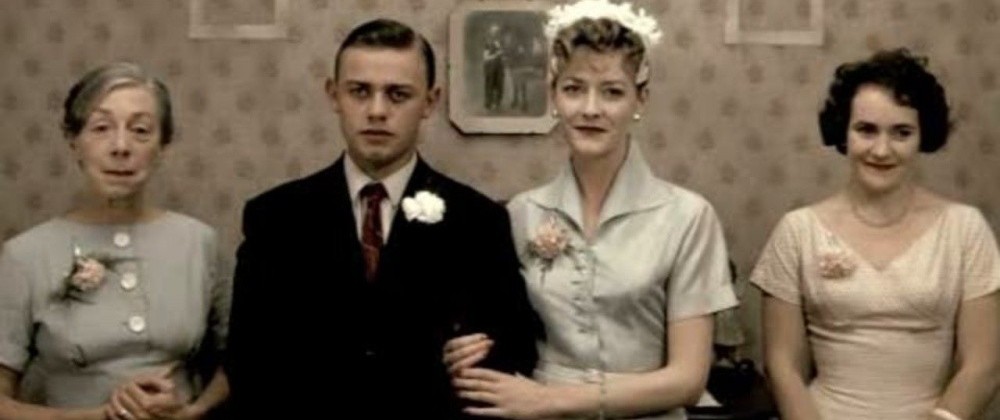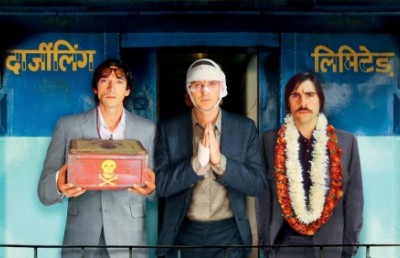Not the Long Goodbye: Some Thoughts on the Role of the Web in the Survival of Celluloid

In his piece, Peter Rist rightly makes a distinction between the death of cinema and the death of celluloid. I like to quip that I am too busy watching movies to become that invested in the debate around the death of cinema. But, seriously, though the formats of artistic expression and exhibition may vary, I feel certain that there will always be some forms of 2 (or 3) dimensional media that combine visual images and (optionally) sound in order to render a creative vision of human experience. I wouldn’t want to predict how cinema will evolve, but our collective need to communicate and the particular human urge to tell stories will, I think, ensure the ongoing fortitude of some form of what we now call cinema.
Yet, while Donato Totaro rightly suggests that the death of cinema may be greatly exaggerated, he and Rist are also right to be concerned about celluloid’s vulnerability to eventual extinction. Both authors are certainly eloquent on the adverse effects of celluloid’s possible demise on creative artists dedicated to some kind of film stock as their chosen medium of expression. I want to shift the angle on this discussion slightly, with my end goal being to suggest that, at least in the area of cinema distribution, a dedication to the preservation of celluloid is not incompatible with an embrace of digital technology as a means of access to our cinematic cultural heritage.
Rist and Totaro both convey a picture of Montreal as a city with a still vibrant celluloid culture. As someone living in Guelph, Ontario, a much smaller city, I am frankly envious of the opportunities they describe to see films. But, if the celluloid scene in Montreal is not anomalous it is certainly rare, and I suspect that throughout North America there are cities of equal or even greater size that cannot boast the kind of beyond mainstream celluloid culture that this city still enjoys. Looked at strictly from the issue of access, many of the rich cinematic offerings to be had in Montreal would not be possible to experience in a cinema outside of a major urban centre, regardless of format.
One of the fantasies I have occasionally indulged is to imagine going to my local cineplex to see, say, a Federico Fellini or Ingmar Bergman film and to not be the only one in the cinema. But the fulfillment of that fantasy is not apt to occur. Notwithstanding the near total dominance of mainstream Hollywood product on our screens, it is sometimes even difficult to see mainstream films that fall outside of the blockbuster category at your neighborhood cineplex. For a big screen viewing of David Cronenberg’s recent film, A Dangerous Method, I had to go to a neighboring city. I am a spy thriller fan and have been anxious to see the latest version of Tinker,Tailor, Soldier, Spy. But for some unaccountable reason, it has had a very narrow release in Southwestern Ontario, initially showing at a few downtown Toronto cinemas and only just now on at a few screens outside of the GTA. Guelph has one independent cinema, for which I am deeply grateful. But it is strictly speaking a second run cinema that mainly shows works that have had initial runs at the local Guelph cineplex or at Toronto cinemas.
The advent of DVD and Blu-ray technologies have certainly provided the means to access a far wider range of global cinema. A cineaste no longer has to live in a large urban center to watch works from diverse national cinemas and from the full spectrum of film history. And, not to be underestimated as an important aspect of many DVD and Blu-rayreleases are the supplementary materials that may vary in quality but that every once in a while include a cinematic gem that would be otherwise impossible to see without a trip to an archive. I suspect that I am not the only Offscreen reader who is an avid follower of Jonathan Rosenbaum’s Global Discoveries column in cinema scope. Once you purchase an all-region DVD player (as I recently did) Rosenbaum’s columns can make you feel that the whole world of cinema is now at your disposal, funds for DVDs and Blu-raydiscs permitting.
Most of the items assessed by Rosenbaum are clearly of particular appeal to viewers already dedicated to taking cinema seriously. More particularly, his columns are aimed at the individual viewer as consumer. In tacit acknowledgement of this, he even devotes a whole column to the issue of DVD prices (cinema scope 31), and titles another of his Global Discoveries columns (cinema scope 47) “Auteurist and Non-Auteurist Shopping Tips.” But what are the opportunities of access to the discs Rosenbaum describes either for larger groups or for those who cannot afford an all-region DVD player or the discs to play in one?
One place we might hope to find opportunities for public access to such works is in the audio-visual collections of universities. At the University of Guelph, the cinema collection is quite extensive (particularly given that there is no film studies program) but there are still some videos on the shelves that have yet to be replaced by DVD copies. There are no Blu-ray discs in the collection and while there are some 16mm prints there are only a few classrooms that are outfitted to show them. Reconfiguring classrooms for Blu-ray compatibility is only a distant dream, and I suspect that the U of G is not alone among Ontario universities in this regard. The inability to use Blu-ray discs is regrettable not only because opportunities to show the most pristine transfers are lost, but so too, are opportunities for addressing gaps in film history. I have frequently taught Contemporary Cinema as a spotlight on British cinema from Thatcher to the present. Yet, as Rosenbaum reminds us in one of his Global Discoveries columns (cinema scope 33 ) one of the seminal British films of the 80s, Terence Davies’ Distant Voices, Still Lives has only recently be made available by the BFI on a region 2 DVD. So, as the owner of an all-region DVD player I can buy it for personal viewing, but not have it ordered for our audio-visual collection at the university. And even if the university were able to afford a 35mm print of the film licensed for public viewing, I would be hard pressed to show the film in an appropriate space.
I regret my inability to expose my students, many of them non-arts majors, to such films. Film Studies students should (hopefully) be open to accessing cinema beyond the mainstream. But it is my students who are not necessarily film majors and who may lack an awareness of just what is out there cinematically that I would particularly like to target. I would argue that video streaming provides a way forward in terms of providing access to a wider range of cinematic works, without the individual viewer or institution requiring specialized equipment. Here the main obstacle to access for educational purposes will be copyright from an educational institution’s perspective and the costs of digitizing archival collections from the perspective of archives dedicated to film preservation.
Though it may seem counterintuitive, the cultural value of video streaming actually depends on the archival preservation of celluloid as source materials for digitization. As I mentioned earlier, a reader of Rosenbaum’s Global Discoveries columns can feel like the world of cinema is his or her oyster. But as Rosenbaum acknowledges (cinema scope 32) this sense of plenitude is illusory. Rosenbaum cites David Kehr as the source of a daunting statistic: that of the 144, 581 films identified on the Turner Classic Movies database (which draws heavily on the American Film Institute’s Catalogue of American Feature Films) only 5.64% are available on home video formats. If only a fraction of American films have been transferred to alternative formats, imagine how dire the stats must be for non-American works. Let me give an example from my own research. I am currently working on a little piece on Henri Barakat, an Egyptian filmmaker who worked during the so-called Golden Age of Egyptian cinema . The Internet Movie Database lists 58 films by Barakat as director. Even if we were rightly skeptical of the IMB’s accuracy at least some of the time, there is no disputing that Barakat’s creative output was considerable, and I have read other sources that suggest that his output was much higher. To date, four Barakat films are readily available, all on DVD from Arab Film Distribution. So, although globalization is a much bandied about term, the world is far from a global village when it comes to film culture specifically and media culture general. And while serious claims have been made about the democratization of the web, this is as yet far from the case if, by democratization, we mean the wide and readily accessible (even for a fee) dissemination of global film culture.

Film (celluloid) preservation is a crucial component to the preservation of cinema history, the next phase of which should be not just the digitization of works for DVD and Blu-ray, but also (and particularly) for video streaming. Computer-based access provides the opportunity to expose individuals and wider groups to cinema history. I am not naïve enough to think that cost free open access to cinema culture is just around the corner, but I do think that web-based streaming technology will be a vital tool in efforts to achieve this ideal.
And there is no doubt in my mind that this is an ideal worth striving for. I recently re-watched a nice little documentary (accessible on the web) by Sayed Badreya called Saving Egyptian Film Classics (2002). As the title suggests, the documentary is about the near total neglect of film prints in Egypt and efforts undertaken by a dedicated few to preserve Egyptian film heritage. While it would be simplistic to blame the neglect of this archive solely on the corruption of the Mubarak regime, there is no doubt that the regime’s indifference to this archive reflects its larger indifference to the freedom and well-being of its people. At one point in the documentary, Martin Scorsese says: “What you have here is a gold mine. You got to take care of it. You take care of it, it’s going to take care of you .” It is an admittedly aphoristic observation and like all good aphorisms that want to move beyond the cliché, it is subject to interpretation. I think what the statement suggests is that one of the barometers of a genuinely civilized society is the degree to which it devotes time and resources to the thoughtful preservation and dissemination of its cultural heritage, including its film heritage. That such commitment not only signals the intrinsic value to that society of freedom of artistic expression but also signals a collective dedication to democratic values and to the free exchange of information across national borders.
The jury is still out as to whether we learn from history in a manner that leads us to correct our collective mistakes. For instance, our knowledge of the Holocaust did not prevent genocide in Rwanda, ethnic cleansing in Bosnia or the current government slaughter of its own people in Syria. Yet, surely it behoves us as a matter of principle not to relinquish the idea that the sharing of cinema culture on a global scale can play a part, however modest, in the perpetuation of democratic values and the validation of free artistic expression.
There are a number of web-based initiatives that suggest signposts for the future in this regard. One is Europa Film Treasures, a website devoted to showcasing the restoration efforts of a number of major world archives, including the British Film Institute, Filmoteca Española, the Cinémathèque Française, Svenska Filminstitutet and many others. Although Europa Film Treasures offers access to only a fraction of the restoration work of these institutions, it does provide works in their entirety, often in pristine transfers and with subtitles or intertitles as required. It is certainly a site that achieves its mandate of showcasing the film preservation work being undertaken in European archives (the site even has an interactive map of Europe that enables a viewer to learn more about a given archive before sampling its work). But, even more importantly, the site is committed to the conviction that while film preservation is crucial, the direct corollary to preservation is dissemination. Treasure isn’t worthy of the name if it is hidden at the bottom of the sea or locked away in an impregnable archive. Europa Film Treasures suggests the utility of web-based platforms in making preserved films available to anyone with internet access.
It is hard to imagine a commercial film studio making its product readily available on the web just for the sake of cultural prestige. But the venerable Russian studio, Mosfilm, has thrown down the gauntlet in this regard through its YouTube channel. Here viewers can access often excellent transfers of Russian films, including acknowledged classics and works that have enjoyed popularity within Russian but have not been widely seen outside of that country. The Mosfilm channel and its content is far from perfect, with many of the works on offer without subtitles and with an absence of English on the site itself that makes it very difficult to figure out just what the channel has to offer. But, however much a work in progress, it does stand as a testament to the capacity for studios to appreciate the artistic value of what they have enough to want to share it with the public.
There are a number of reasons why I think that universities are uniquely poised to play a role in the web-based dissemination of film culture. With respect to the individual viewer, accessing cinema via the web will only require access to a computer connected to the internet. With respect to groups of viewers, while cinemas are (and have already been) public spaces for viewing cinema works in digital form, such works are still likely to be those in the Hollywood mainstream. Academic libraries could make excellent gateways for the web-based dissemination for archivally interesting cinema for several reasons. First, almost all universities are already equipped to project the internet onto large screens in spaces of varying audience capacity. Second, the culture of academic freedom at universities (however tested from time to time) enables university staff to acquire and license content with fewer restrictions around potentially controversial works than public libraries sometimes do. And third, many North American university libraries already employ staff trained in matters of copyright, knowledge that will be crucial where web-based content is not just accessed by an individual but is also shown for classes, student groups and other public performance contexts.
So, while I share the concern of many film scholars (including Rist and Totaro) about the vulnerability of celluloid, I am most anxious about the preservation of archival films, with the view that film history is cultural history. But, at the same time, the corollary to preservation is access: the cultural value of a preserved film is non-existent unless people get a chance to see it. So, while I will always treasure the viewing of a pristine 35 mm print of a film classic in a cinema as much as anyone, I think that web-based platforms can play a role in providing opportunities to access strata of film history that otherwise would remain in a darkened vault, with no chance of expanding our understanding of the past or of how history can impact the present.
Links
1. Offscreen Volume 15, Issue 10 Oct. 2011
6. Saving Egyptian Film Classics Dir. Sayed Badreya, 2002.
.













